Our islands specialise in hidden utopias. One of the very best of these contains a small (75 square miles) Area of Outstanding Natural Beauty – the Arnside and Silverdale AONB on the border of Lancashire and Cumbria.
Discover the best places to visit, where to stay and eat and why the landscape is so special with our visitor's guide to Arnside and Silverdale.

Why visit Arnside and Silverdale?
Many of us have sped past Arnside and Silverdale, usually at the end of fraught journeys up the M6 to the Lake District, not knowing that we have bypassed somewhere arguably even more special.
This is nothing new; followers of the picturesque movement shot by on the newly established coaching routes. The Lakeland poets followed suit. Wordsworth could have written his greatest poem here, Silverdale. Coleridge might never have dreamed more sweetly than here, loving its blend of quietude and awe. Eventually, Edward Thomas made it here, describing it in The Sheiling as: “A land of rocks and trees / Nourished on wind and stone.”
This is no mere landscape, for it reaches out into the silvery seascape of the Morecambe Bay estuary and into the skyscape. More importantly, it is a dreamscape: a place to stop and stare. It is a part of paradise that fell to Earth, liked where it landed and stayed.
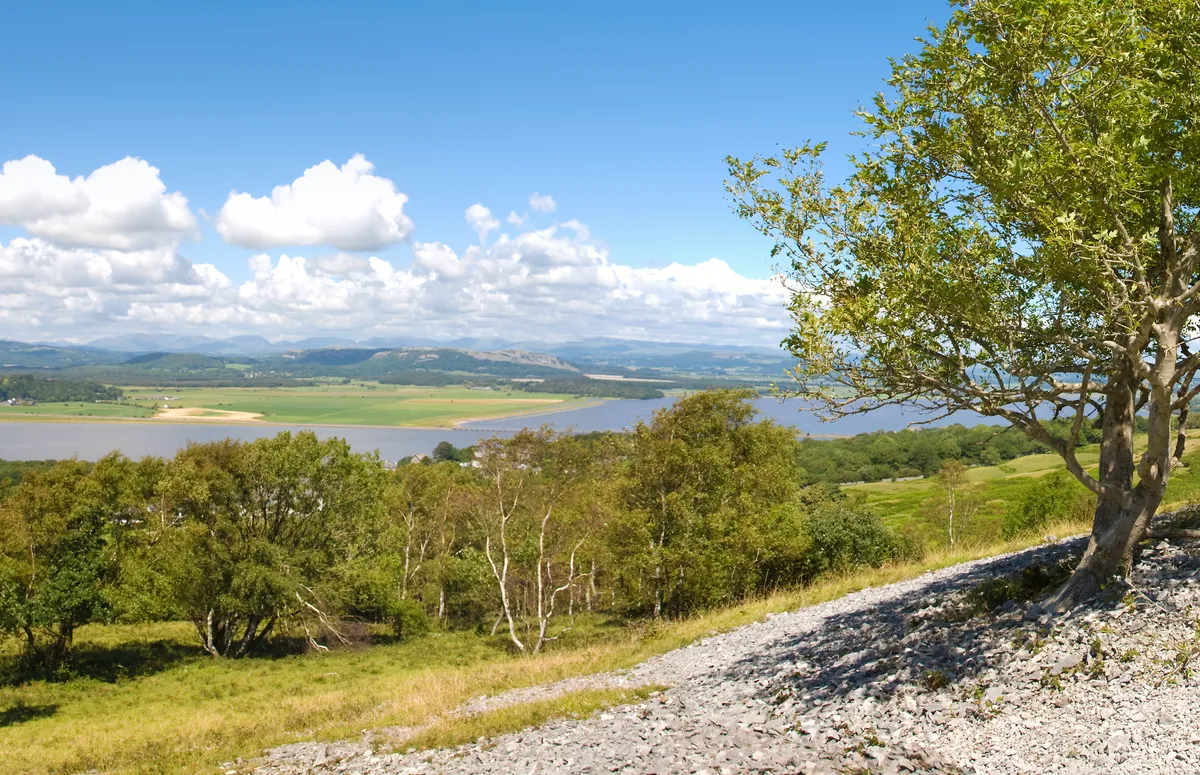
Arnside and Silverdale walks
The AONB’s labyrinthine network of lanes and footpaths is perfect for pottering, and central to the intense feeling of spirit of place that pervades throughout.
Here one can bumble peacefully all day. These paths are not for hurrying. And this is pepper-pot country, for there are stone cairns dotted about all over the place, high and low. Some are almost impossible to find, and even harder to refind.
The pretty little station of Silverdale sits at the sylvan heart of the AONB and is the perfect starting point for visiting one of England’s best-loved nature reserves: RSPB Leighton Moss. If you’re on foot (after arriving by train), entry to this expanse of lagoons, wetlands and reedbeds is half price. A varied 7.6-mile circular walk cuts through the reserve and goes on to explore some of the highlights of the AONB.
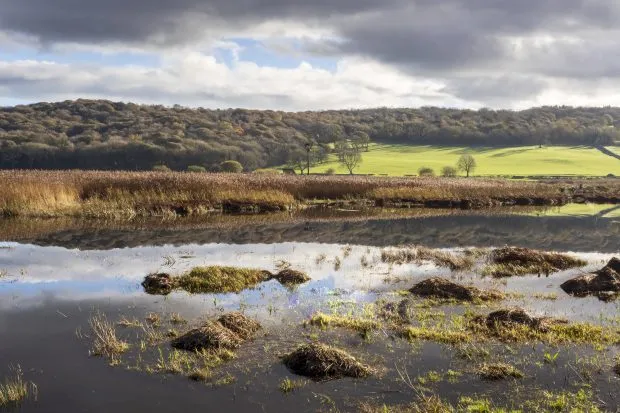
Things to do in Arnside and Silverdale
Arnside
The town of Arnside, with its Victorian promenade and arching railway bridge across the Kent, overlooks this strongly tidal estuary. In summer, Arnside is run by its swifts, which scream over its rooftops each evening.
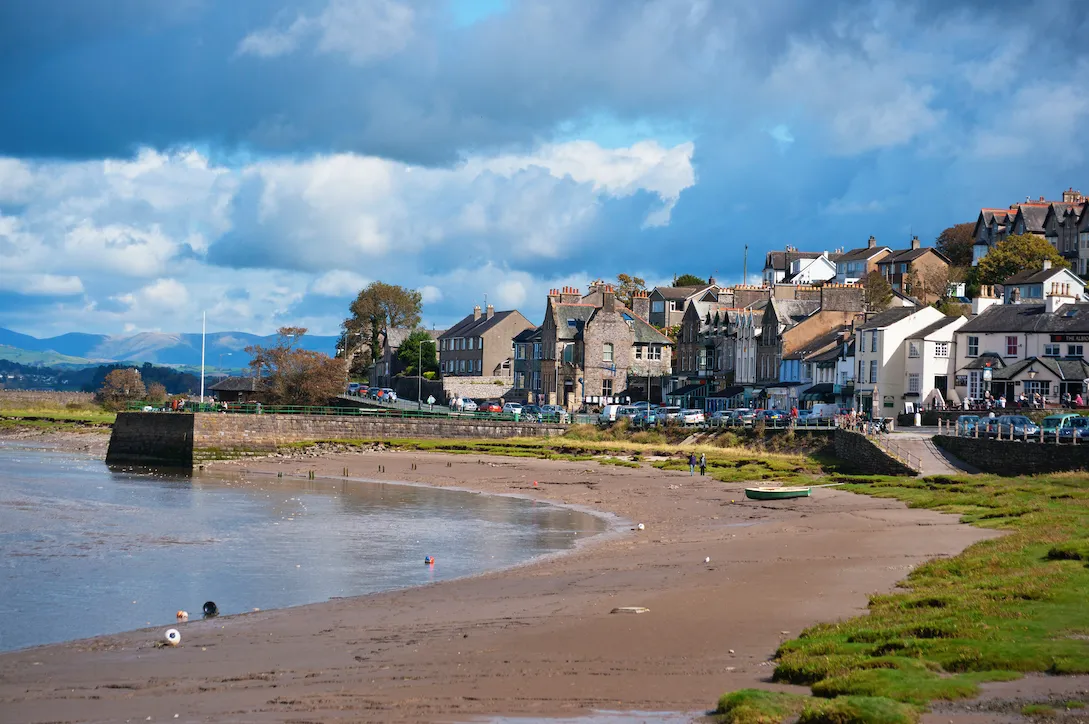
Silverdale
Silverdale is a rather disparate place – a parish of whitewashed houses that sprawls peacefully over hillocky land. It is perhaps more of a state of mind allied to the Quaker movement (which has roots at nearby Yealand) than anything else. This is borne out by the fact that many a house, street and, curiously, cul-de-sac elsewhere is named after this village idyll.
Warton Crag
The village of Warton, above the small railway town of Carnforth, forms the AONB’s southern boundary. Above it stands Warton Crag, the southernmost of the limestone hills. The old A6 runs along the AONB’s eastern boundary, but the hills continue and tower proudly above the M6, a mile or so to the east, before marching off towards the Yorkshire Dales. The broad estuary of the River Kent, which flows down from Kendal, forms the northern boundary.

Whitbarrow
Administrative boundaries often belittle landscapes, especially here, for the limestone hills rampantly cross the Kent estuary to invade the southern end of the Lake District National Park. Here stands Whitbarrow, a haughty scarred limestone massif that scarcely seems British, though it could perhaps be twinned with Great Orme’s Head on the Clwyd coast. It takes two full days to explore Whitbarrow, and longer still for it to accept you.
Arnside Knott
The area contains some of the richest wildlife sites in Britain: the reedbed wetlands of the RSPB’s Leighton Moss reserve and Hawes Water at Silverdale, just about any of the woods, the limestone pavements of Gait Barrows National Nature Reserve, Hutton Roof and Holme Park Fell, and the limestone pasture and scrub mosaics of Arnside Knott, Whitbarrow and Yewbarrow are all essential visiting for the keen naturalist. Perhaps the National Trust’s Arnside Knott should be your first port of call, for from its summit the whole landscape can be appraised – though beware, the Knott may seek to seduce you into wanting to stay forever, transfixed by wonder.
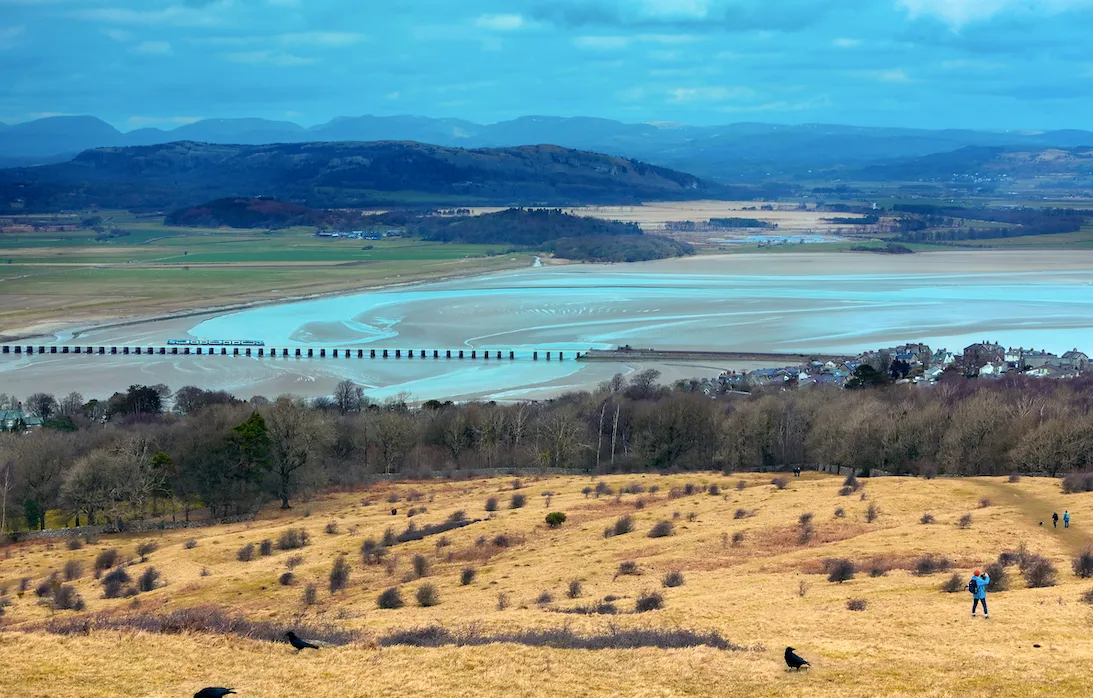
Yewbarrow
To the west is a lower, calmer limestone hill, Yewbarrow, above the paradisiacal village of Witherslack. The limestone eventually peters out at Humphrey Head, just beyond the coastal retirement town of Grange-over-Sands.
Meathop Moss
Meathop Moss near Witherslack is a butterfly-rich raised bog with boardwalk - well worth a visit.
Discover more of the British countryside
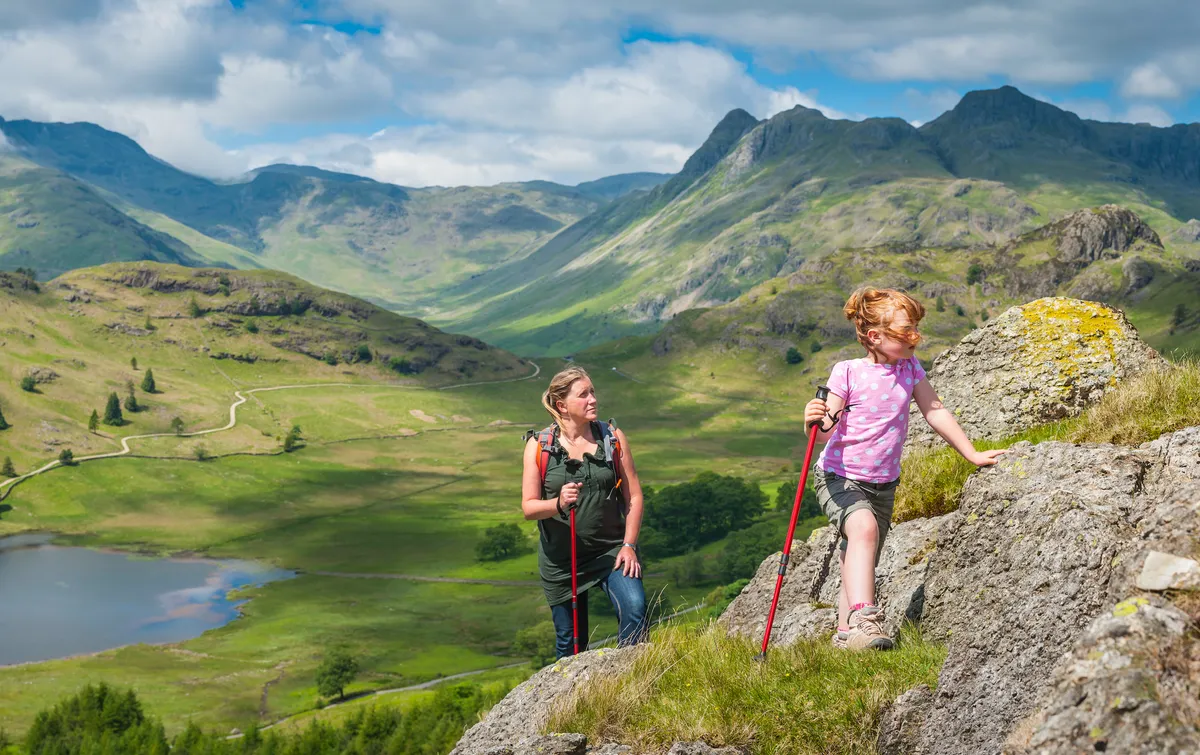
Heathwaite
Heathwaite, the lower hill west of Arnside Knott, offers a fine view over Silverdale estuary.
Levens Hall
Levens Hall is an Elizabethan manor with an extraordinary yew topiary garden.

Gait Barrows NNR
Gait Barrows NNR near Carnforth provides an excellent example of limestone pavement.
The Fairy Steps
The Fairy Steps near Beetham is a childhood delight ascending a short scar edge.
Jenny Brown’s Point and Jack Scout
Jenny Brown’s Point and Jack Scout (NT) are close by on the Silverdale coast. Sit on the Giant’s Seat to enjoy the view.
Places to stay in Arnside and Silverdale
Ye Olde Fighting Cocks
Ye Olde Fighting Cocks is perfectly placed on the promenade, offering stunning views across the Kent Estuary to the Lakeland mountains from its terraced garden. Originally built in 1660, a large variety of rooms are available. Breakfast is included in the price, and the pub also serves meals at lunchtime and in the evenings.
Challan Hall, near Silverdale
This B&B overlooking the ‘original’ Lake Hawes Water, complete with booming bitterns and hovering marsh harriers at breakfast, also offers self-catering cottage lets. Find out more about Chilean Hall.
Hollins Farm Holiday Park, Arnside
Hollins Farm is campsite at the foot of Arnside Knott that offers both pitches and glamping pods, plus access to a café, bar and swimming pool at the nearby Holgates site.
Planning a walk in the Lake District?
Of all the national parks in Britain, the Lake District is arguably the most celebrated – discover the area's fells, rivers, waters and towns with our guide to the best walks in the Lake District National Park.
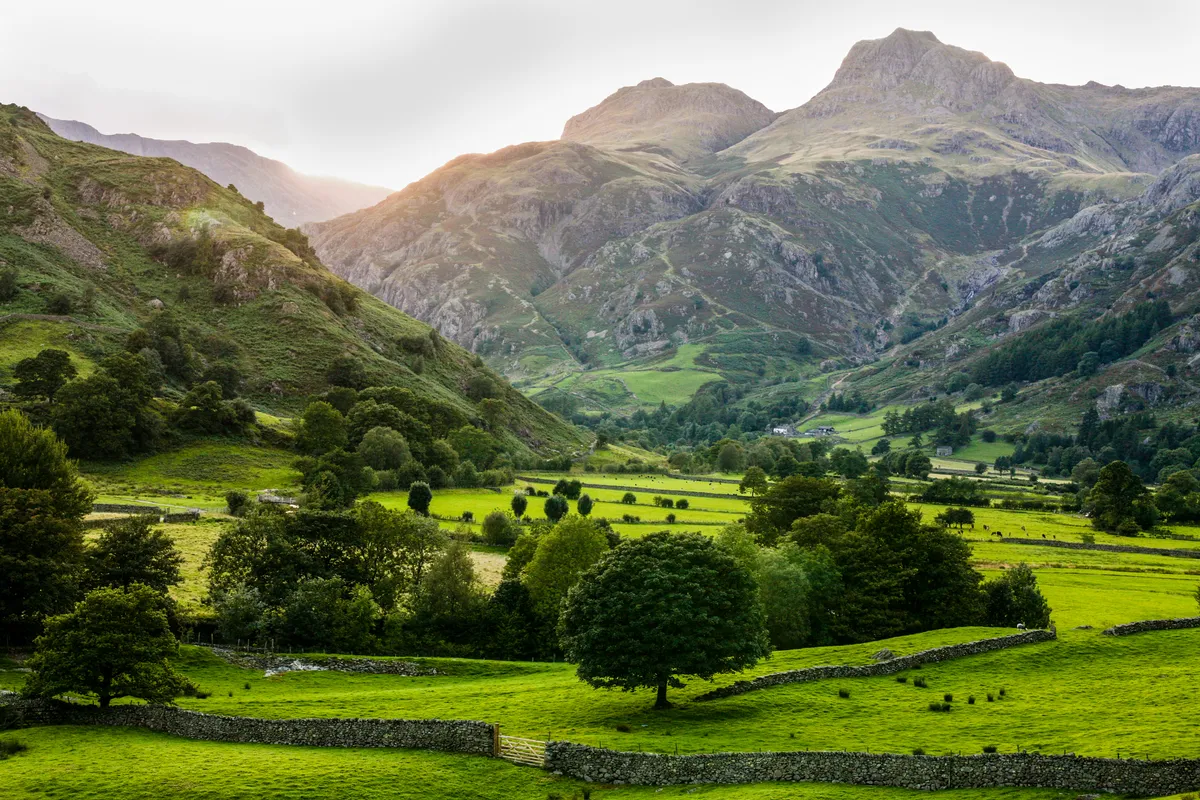
Where to eat in Arnside and Silverdale
The Albion, Arnside
Situated on the Promenade, The Albion offers good food of local provenance and views of superb sunsets.
The Old Bakehouse Café, Arnside
The Old Bakehouse is a dog-friendly café serving freshly made pastries.
Ye Olde Fighting Cocks, Arnside
Overlooking the estuary, Ye Olde Fighting Cocks hotel and pub provides fresh homemade meals and Sunday roasts.
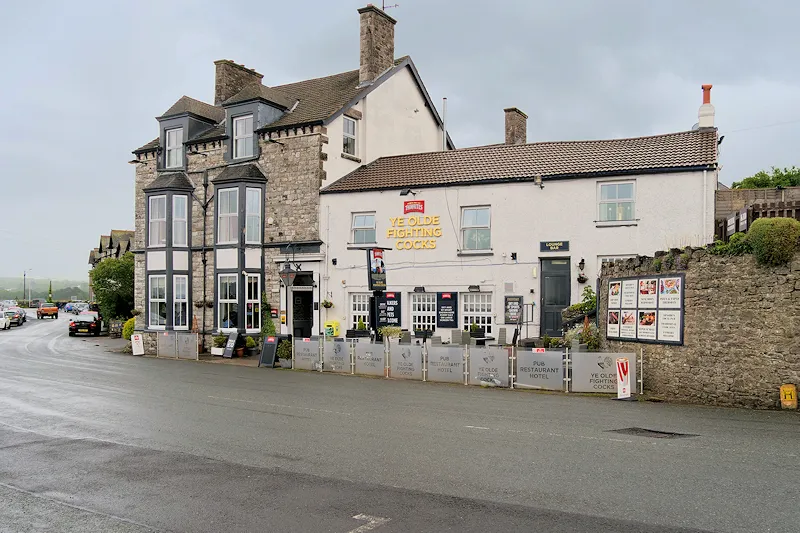
Woodlands Hotel, Silverdale
The Woodlands Hotels is a charming community-owned pub.
Wolf & Us, Silverdale
The Wold & Us serves excellent cake and wholesome food, with seafood and wood-fired pizza in the evening.
Old Beetham Post Office, Beetham
The Old Beetham Post Office is a village store and tea room with superb cakes.
Arnside and Silverdale history and landscape
Arnside and Silverdale has almost stood apart from history. It has largely done its own thing, and has more of a sense of timelessness than of time. There is but one hillfort, a paltry affair on the summit of Warton Crag.
Much of the terrain is too rocky for the plough, or even for the tractor. Some hillsides, to the east and south of Arnside, at Warton, and just east of the motorway near Burton-in-Kendal have been quarried, primarily for roadstone, but most of the slopes either grow hill sheep or trees.
There is a long history of coppicing here – for charcoal, tanning, fuel and bobbins for the Lancashire mills. The dark satanic mills must have consumed myriad bobbins, for just about every tree has been coppiced here, many times.
Today, coppicing is practised primarily for nature conservation, for the woods are of immense importance for wildlife; as indeed are the limestone grasslands and pavements, the peaty wetlands and the rock and salt-marsh shorelines.
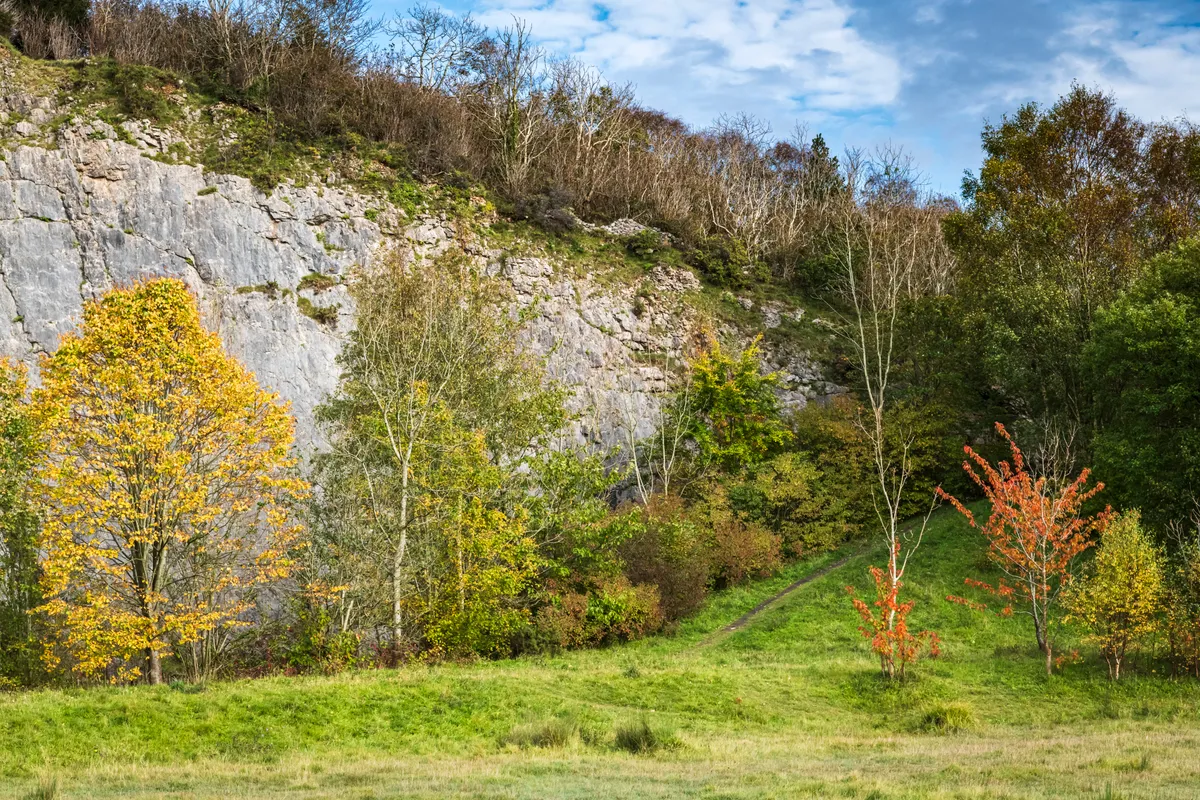
Arnside and Silverdale Geology
Geology is at the root of the deep magic of the place. This is carboniferous limestone terrain, of stand-alone hills with scree slopes and outcrops of limestone pavement, separated by meandering peaty valleys that grow rocky hillocks, cows and wildlife. It is well wooded too, with most of the woods being ancient in nature and unblemished by 20th-century coniferisation. All this forms an intimate landscape mosaic that offers great connectivity for the more mobile species of plants and animals.
But there is an extra dimension to this district, concerning the intensity of light. This is something to do with the way sunlight reflects off the grey limestone walls, paths, rocks and slopes of scree and clitter, while being absorbed by the woods, especially by the sombre yews. This creates a curious juxtaposition of lightness and darkness that only an artist could capture, and a poet articulate.

Wildlife of Arnside and Silverdale
Ecologically, the district lies along the boundary of north and south – where plants and animals of the far south occur at the northern limit of their UK range, and vice versa. The result is a naturalist’s paradise, though climate change is already impacting hugely on this heady mix.
The botany is renowned, including local specialists such as dark red helleborine and top national rarities including the Teesdale violet.

It is also a nationally important area for butterflies, notably for the rare high brown fritillary and other fritillary butterflies, and for the Scotch argus, whose outpost on Arnside Knott marks the very southern limit of its range.
The Morecambe Bay area is one of our richest districts for butterflies, with 36 species occurring there annually. Remarkably, seven are recent colonists – species that are moving north in response to warmer conditions caused by climate change. But despite brilliant conservation efforts, some of the rarities for which the region is noted are in serious decline: the high brown and pearl-bordered fritillaries are now all but confined to the Whitbarrow area, and the Scotch argus has dwindled alarmingly on Arnside Knott.
Guide to British butterflies
Britain is home to roughly 60 species of butterfly, which all play an important role in pollination. In our expert butterfly guide, we take a look at butterfly identification, common butterfly species, how long butterflies live, and where to see them in the UK.
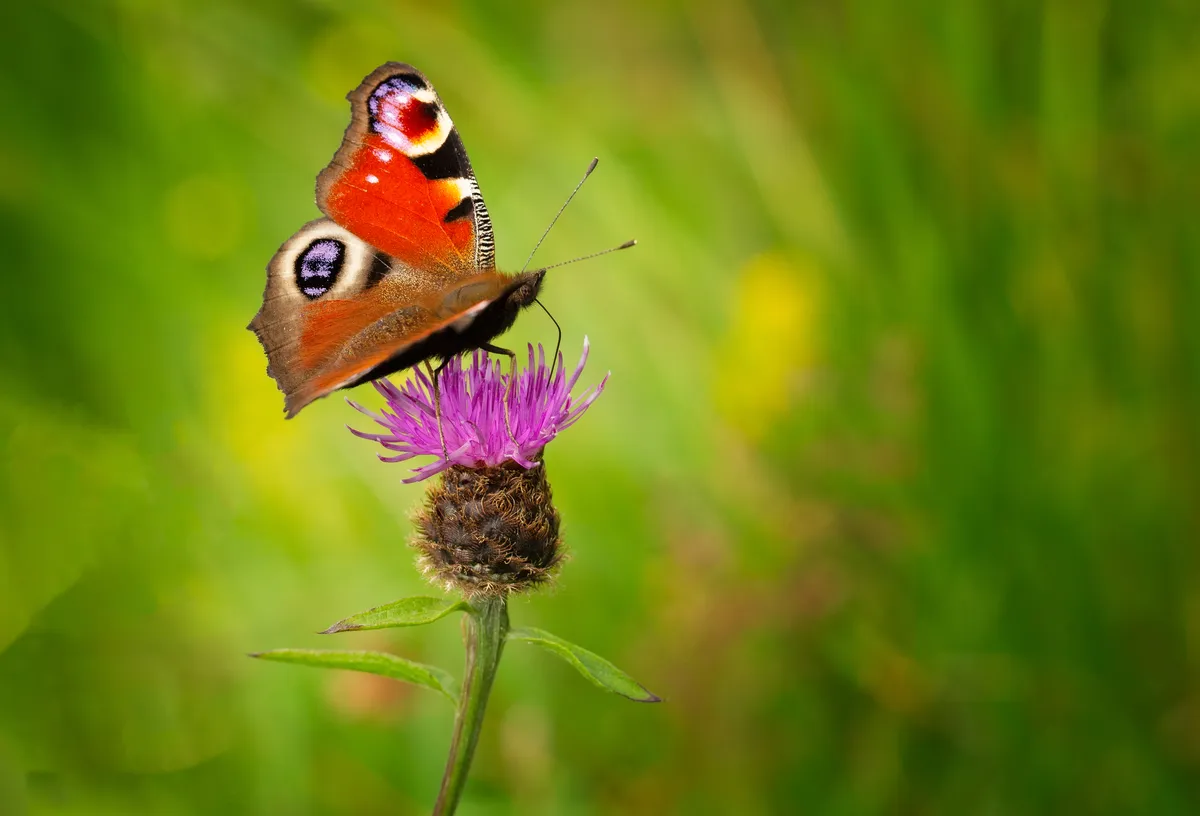
Climate change – in the form of milder winters that exacerbate grass and bramble cover and crowd out essential bare ground – is thought to be the main difficulty. Nitrogen deposition is another major problem. These issues probably explain why the reintroduction of coppicing in the woods has not yet benefited the fritillary butterflies greatly.
Lancaster University is leading the research to find solutions. Butterfly Conservation is running a project to reverse the decline of the Duke of Burgundy in the region. Cumbria Wildlife Trust (CWT) has restored raised bogs around Witherslack, to the benefit of the large heath and green hairstreak colonies. Some other species are thriving, notably the small pearl-bordered fritillary, the speckled wood and the ringlet.
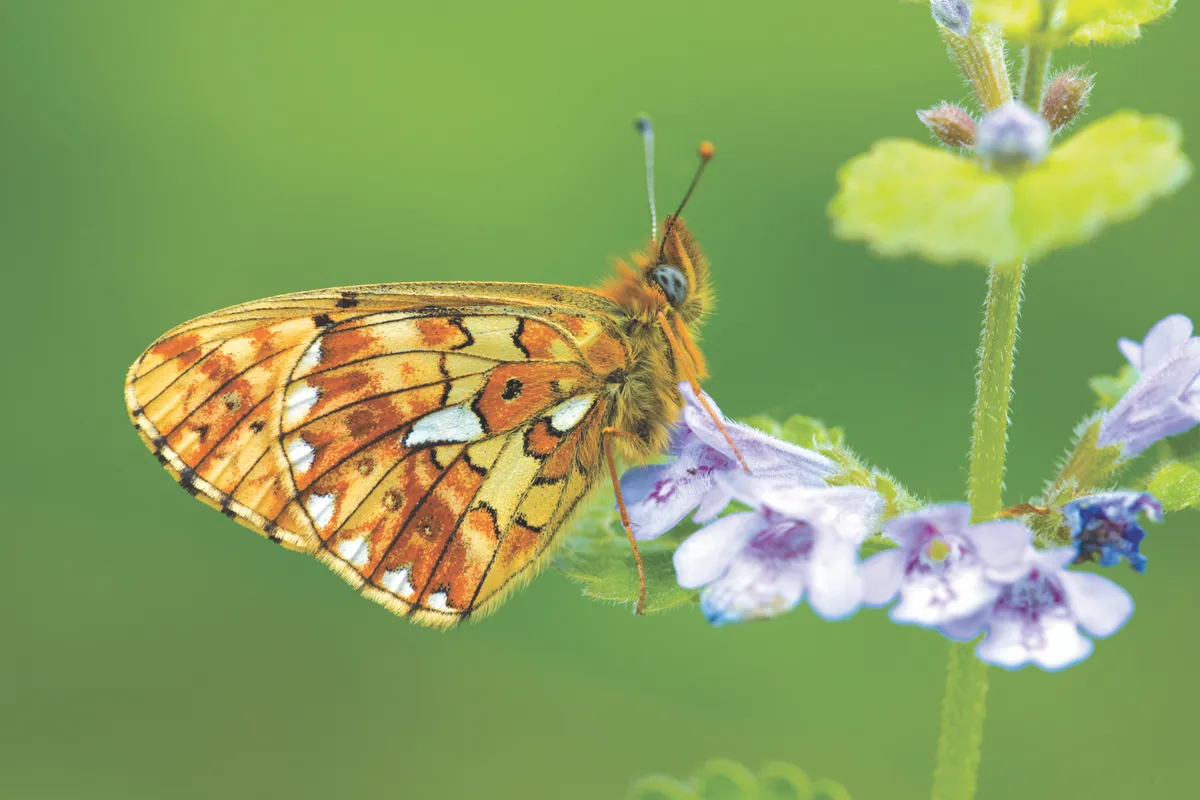
How to get to Arnside and Silverdale
The AONB is just off junctions 35 and 36 of the M6. The Furness railway line runs through it, with stations at Silverdale (+ shuttle bus link to the village centre) and Arnside, linked to the north-west mainline from the station at Lancaster. There is also a Stagecoach link with Lancaster.
Most people who come here are seeking peace and natural beauty. Many are on walking holidays. Some have ancestral links with the Red Rose County.
Many naturalists visit in July to see the butterflies, and birders visit the RSPB wetland reserve at Leighton Moss all year round. Consequently, there are no tourist grot-spots (though one static caravan site is perhaps overlarge). Book your accommodation in advance. Don’t arrive on spec: the district has limited capacity and is often full. Above all, this is not a place to visit but once. You will return.

